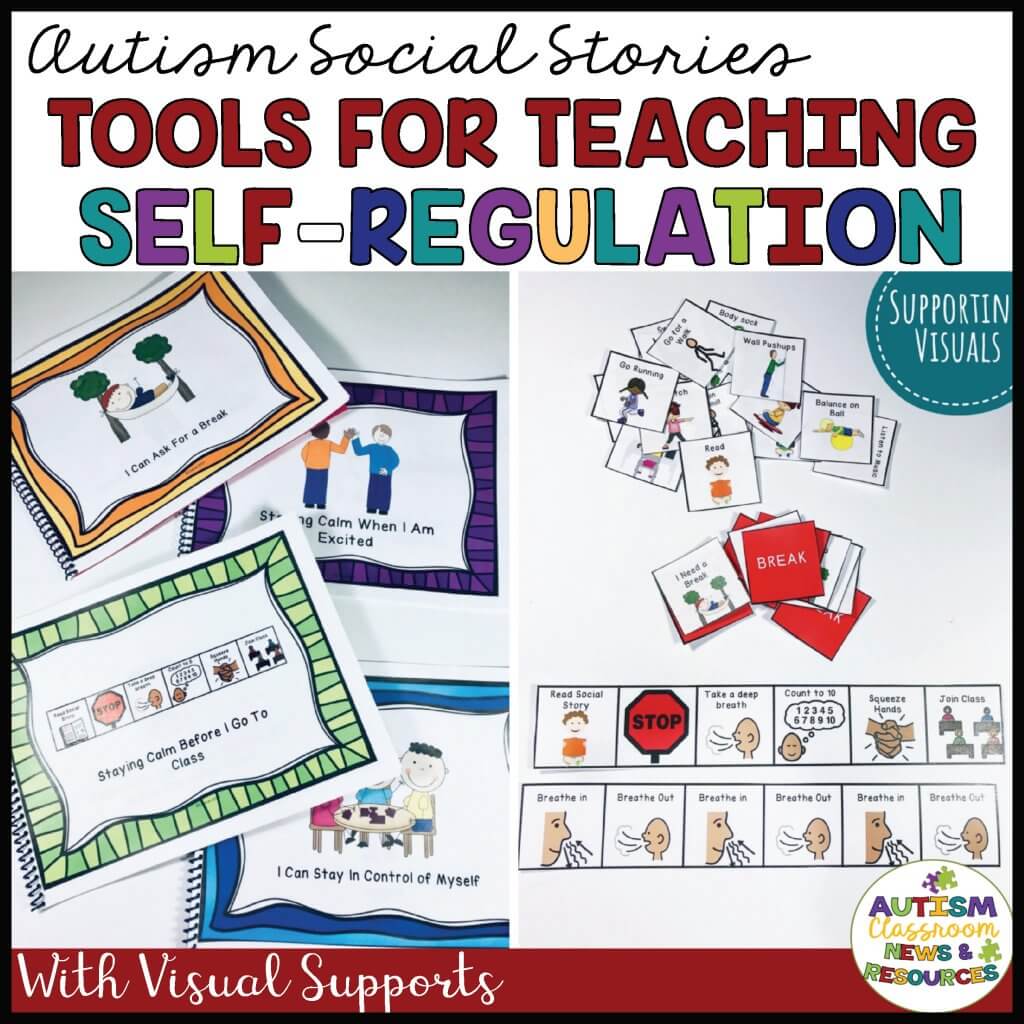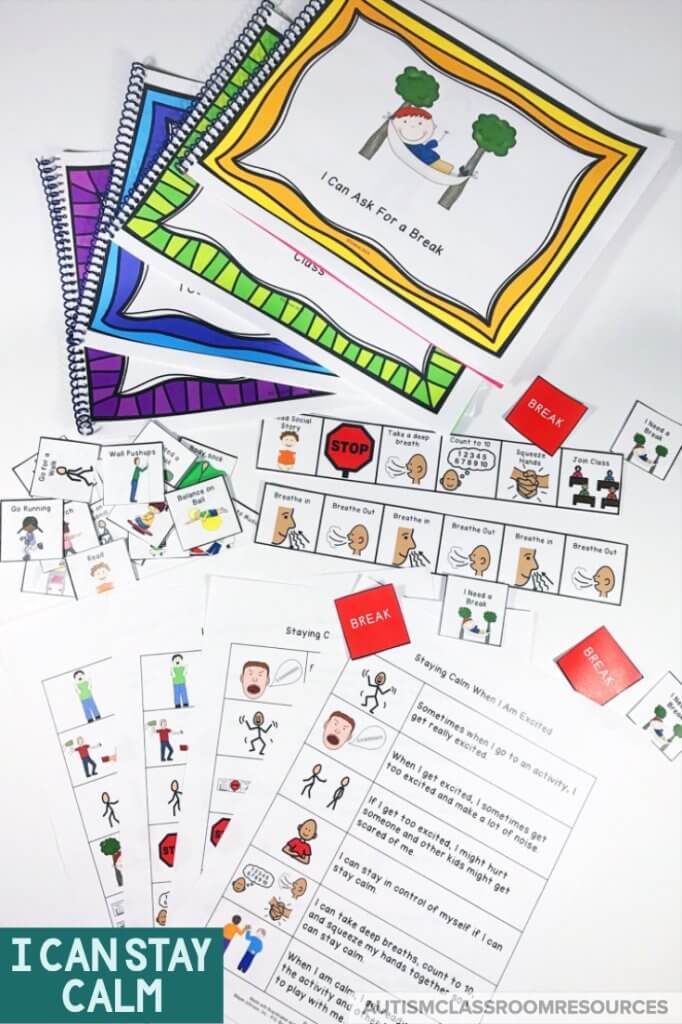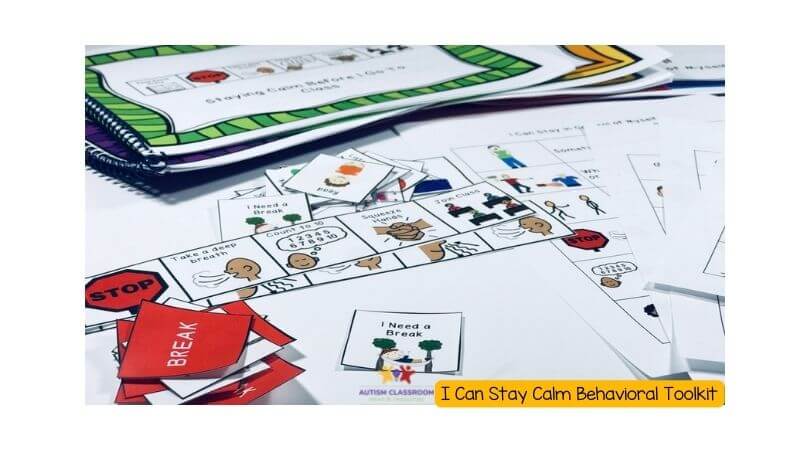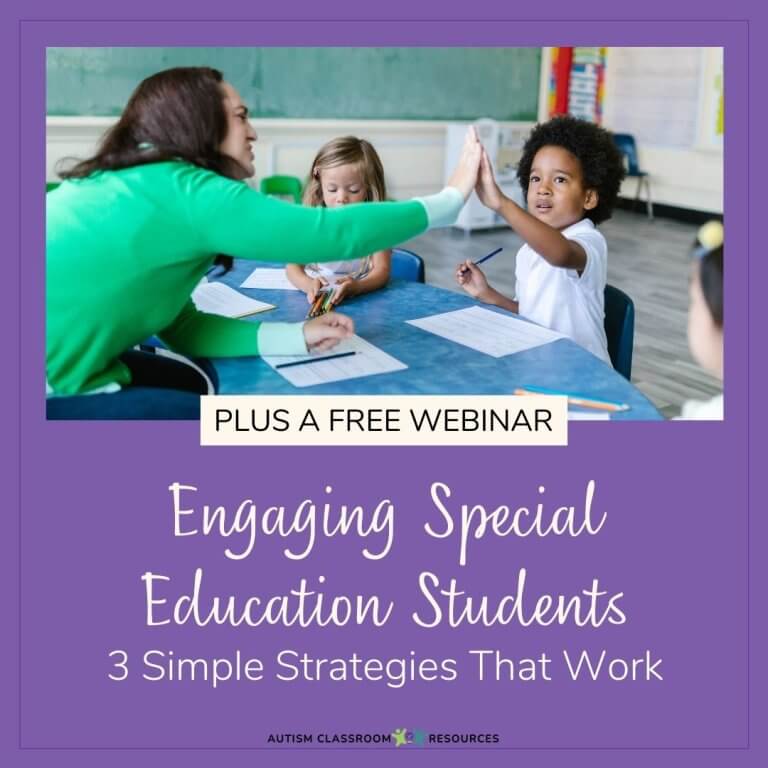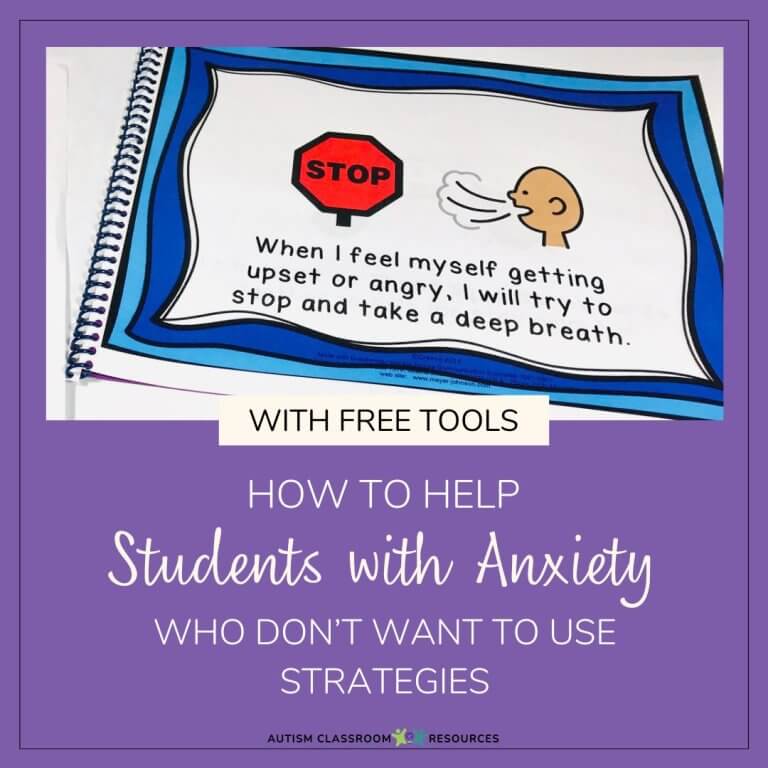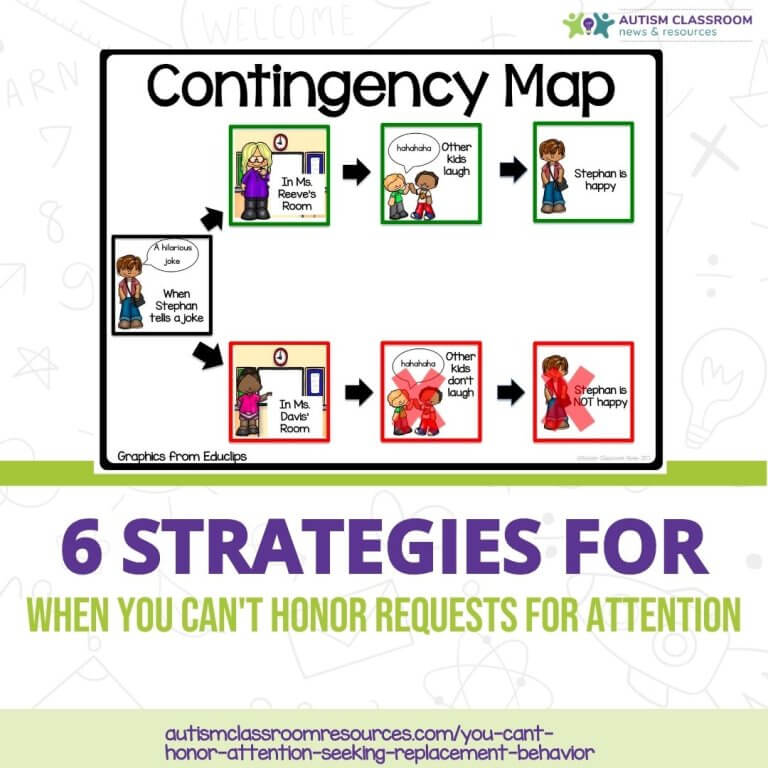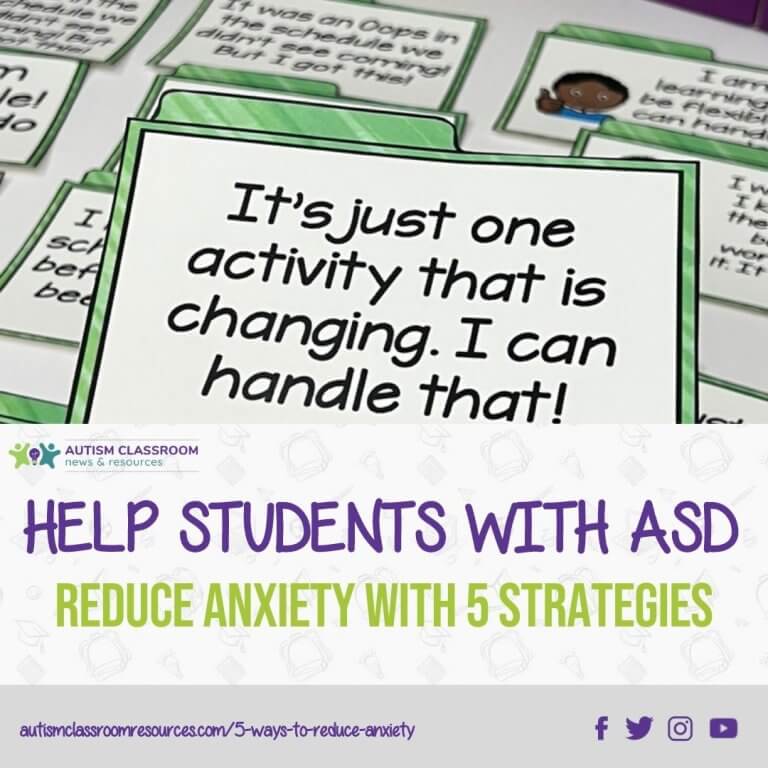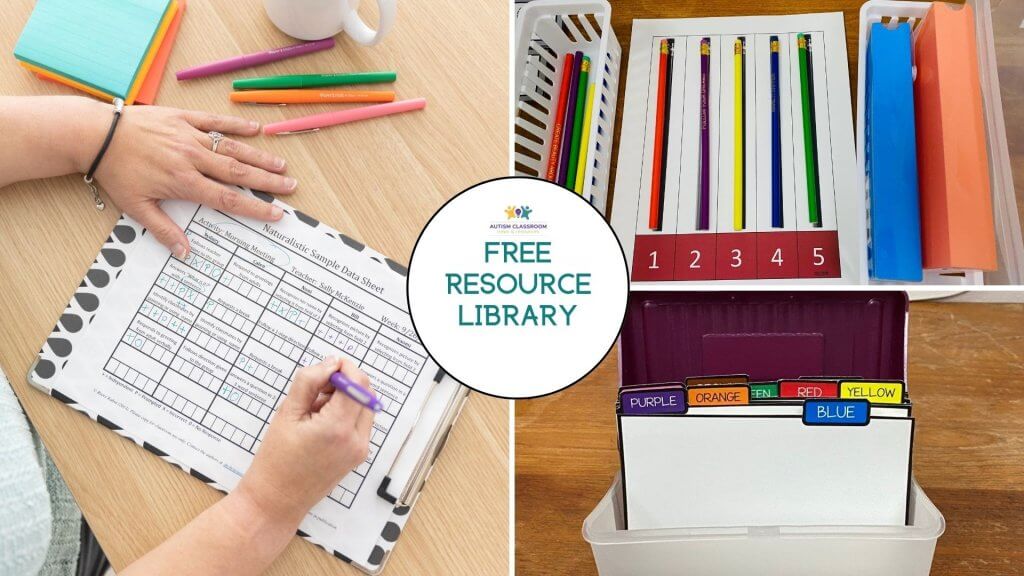Sharing is caring!
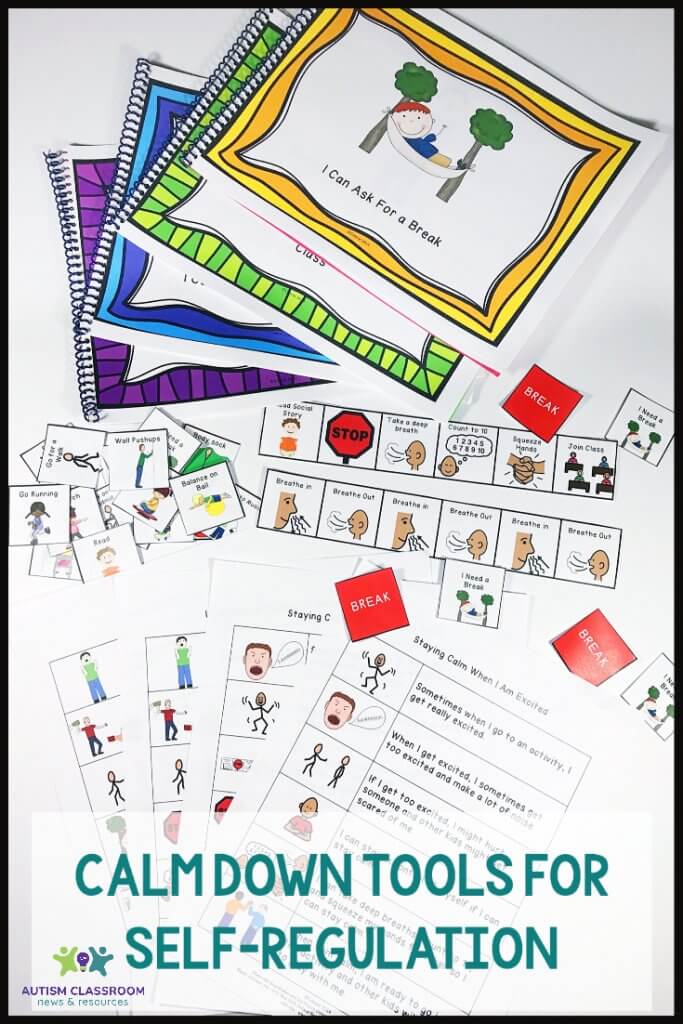
If you work with students with anxiety, chances are you are looking for ways to teach self-regulation skills, and social stories are just one tool that can help. Typically social stories alone are not enough of an intervention to make a difference. But together with other tools, like relaxation and self-regulation strategies, they can create good coping strategies. I talked about progressive relaxation in my last post as one of those tools. I wanted to focus today on a behavioral toolkit I developed to help students learn to practice deep breathing and self-control.
What is in the Self-Regulation Toolkit?
I Can Stay Calm is a combination of social stories and visual supports (both evidence-based practices). This toolkit was designed to help students contain excitement and stay calm. It includes strategies to help calm themselves when they are angry or frustrated. And it includes social stories as well as teaching protocols to teach them to ask for a break (which is part of functional communication training, also an EBP).
The I Can Stay Calm Behavioral Toolkit includes the 4 social stories. One is about using a calm down routine to be ready to go into a class or activity. A second talks about how to calm down when excited. The third addresses using calming strategies before becoming aggressive. And the fourth reviews how and when to ask for a break.
What Is A Social Story?
A social story gives information to students about their behavior, others’ perspectives, and coping strategies for handling difficult information. We use them to support students with autism and I use them with a variety of populations for which I’ve found them to be quite helpful, including typical individuals.
Which Social Story Format Should I Use?
In this package, each social story is in a format with 1 idea and picture on each page and an identical story in which the whole story is contained on 1 page with a picture for each idea next to the line. Which one you use at what time will depend on the needs and developmental level of the student as well as the situation. Younger students typically do well with the multi-page stories but could use the 1-page stories as quick reminders in the
situation.
Visual Supports for Self-Regulation
In addition to the social stories, there are visual supports included for cueing self-regulation strategies. The visuals include a set for relaxation with a deep breathing sequence. There is also a calm-down sequence of actions to complete before entering class in order to stay calm. And there are pictures that can be used for choice boards for activities during break time. These include a variety of sensory activities as well as reinforcing or exercise-based activities.
Finally there are multiple copies of a break card with a picture and without a picture. These can be used for students to request a break and correspond to the “I can ask for a break” social story. Breaks are best used when they include scheduled activities. The visuals for exercise and activities can be used to either choose or structure activities for a break. To learn more check out this post about teaching students to ask for a break.
